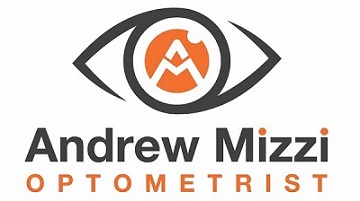Myopia Management
For Eye Health
Myopia, or shortsightedness, is becoming increasingly common among children and teenagers. Studies show that nearly 30% of the global population is affected by myopia, and researchers expect this number to rise¹. At Andrew Mizzi Optometrist, we are committed to providing comprehensive myopia management services to safeguard your child's vision.


What is Myopia?
Myopia, commonly known as shortsightedness, is an eye condition and a type of refractive error where distance vision is blurry while close objects are clear. This condition occurs when the eyeball experiences abnormal eye growth or the cornea is too curved, causing difficulty focusing light directly on the retina. Myopia typically develops in childhood and can progress until the early adult years.
The Causes of Myopia
- Family History: Myopia often runs in families. Children with one or both parents who have myopia are at a higher risk of developing the condition themselves.
- Prolonged Near Tasks: Activities that require intense near focusing, like reading, writing, and using digital devices, can increase the risk of myopia.
- Limited Outdoor Time: Studies suggest that spending less time outdoors during childhood can contribute to myopia development.
- Excessive Screen Time: Prolonged screen exposure (computers, tablets, smartphones) can contribute to eye strain and myopia development.
Signs of Myopia Parents Should Look Out For
Parents should be vigilant for signs of myopia in their children, such as:
- Squinting to see distant objects
- Holding books or devices very close to the face
- Complaints of headaches or eye strain
- Difficulty seeing the board at school
- Sitting too close to the television


The Risk of Unmanaged Myopia
If myopia is left unmanaged, it can lead to severe complications, including:
- Progressive Worsening: Myopia can continue to worsen, leading to higher prescription needs
- Increased Risk of Eye Diseases: High myopia significantly increases the risk of retinal detachment, glaucoma, cataracts, and macular degeneration³
- Impaired Quality of Life: Severe myopia can limit daily activities and affect academic and athletic performance
Andrew Mizzi Optometrist’s Myopia Management Services
We offer various management options tailored to the needs of each child. Our comprehensive approach includes advanced treatment options to slow the progression of myopia. In addition to these treatments, we provide lifestyle and environmental recommendations for managing this eye condition. Our goal is to preserve your child's eye health and enhance their quality of life through proactive and personalised vision correction strategies.


References
- Holden, B. A., Fricke, T. R., Wilson, D. A., Jong, M., Naidoo, K. S., Sankaridurg, P., … & Resnikoff, S. (2016). Global Prevalence of Myopia and High Myopia and Temporal Trends from 2000 through 2050. Ophthalmology, 123(5), 1036-1042. Retrieved from PubMed
- Morgan, I. G., Ohno-Matsui, K., & Saw, S. M. (2012). Myopia. The Lancet, 379(9827), 1739-1748.
- Morgan, I. G., French, A. N., Ashby, R. S., Guo, X., Ding, X., He, M., & Rose, K. A. (2018). The epidemics of myopia: Aetiology and prevention. Progress in Retinal and Eye Research, 62, 134-149. doi:10.1016/j.preteyeres.2017.09.004. Retrieved from PubMed

